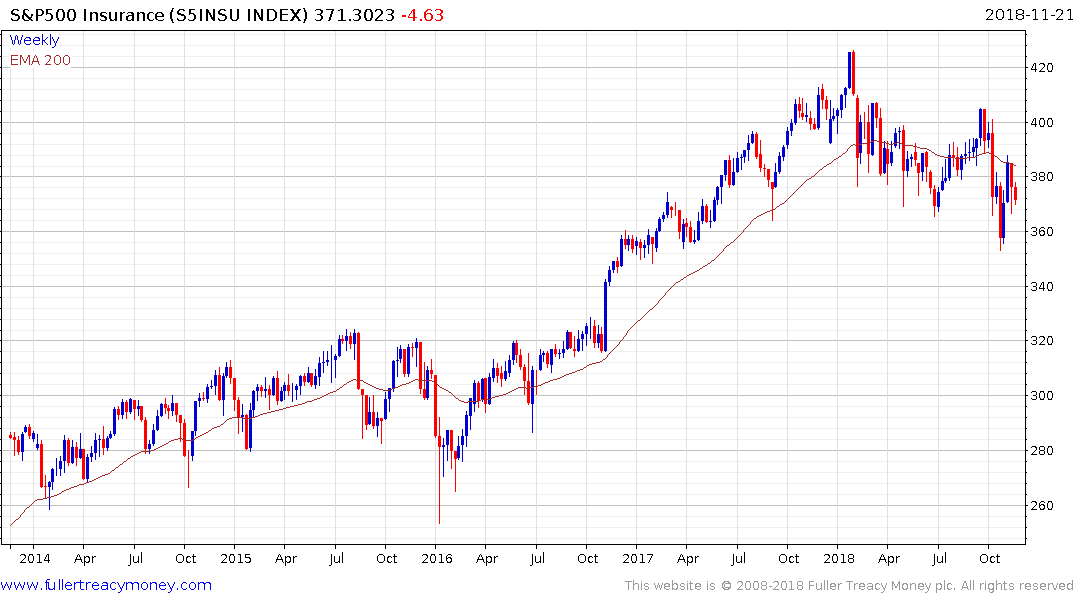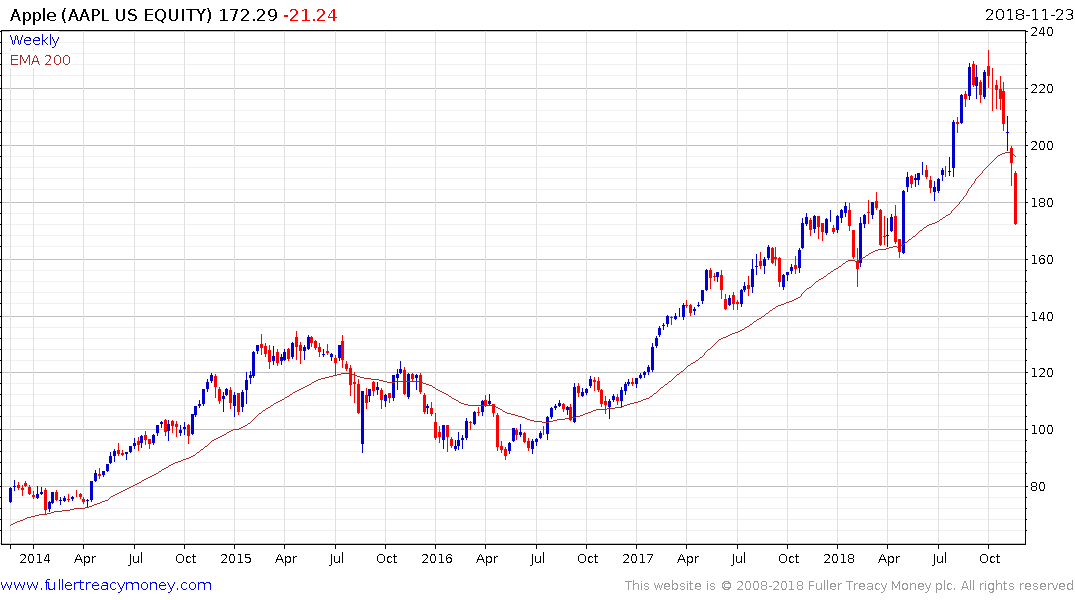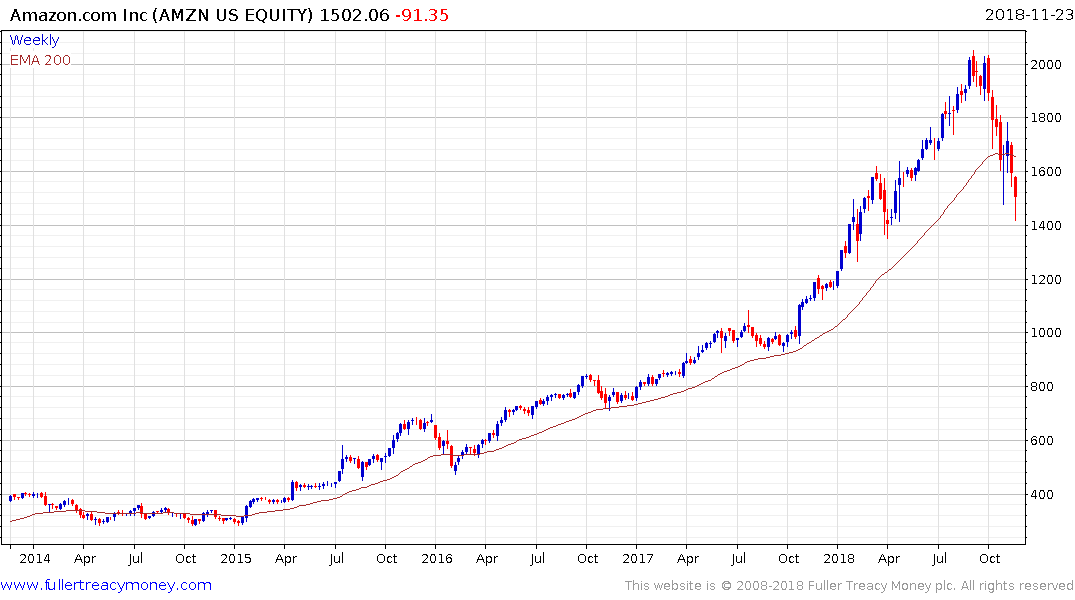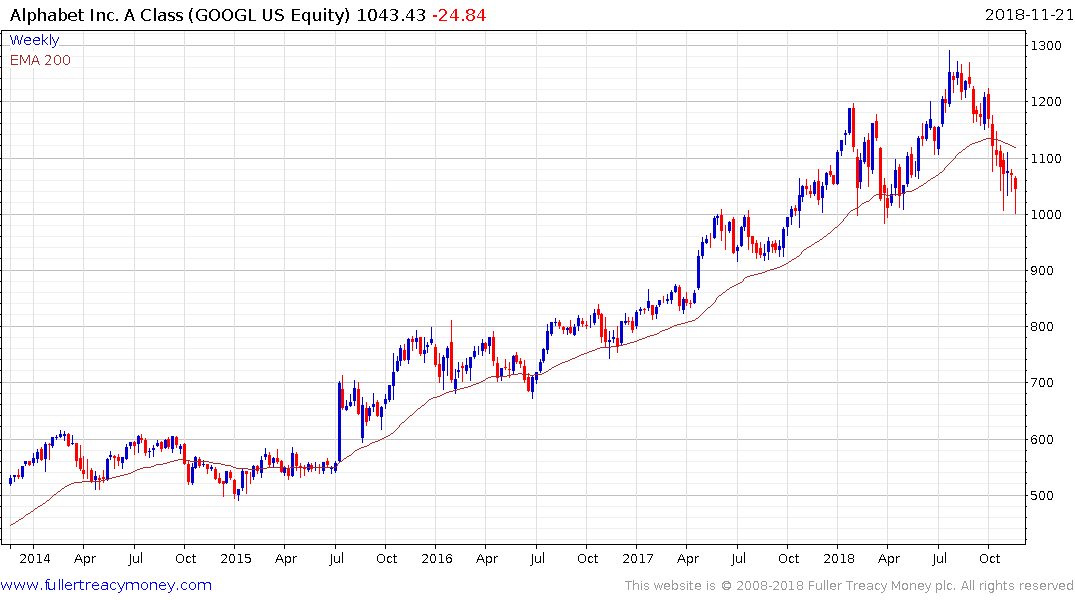An Evolve-or-Die Moment for the World's Great Investors
This article by Adam Seessel for Fortune.com may be of interest to subscribers. Here is a section:
As these platform companies create billions in value, they are simultaneously undermining the postwar ecosystem that Buffett has understood and profited from. Entire swaths of the economy are now at risk, and investors would do well not only to consider Value 3.0 prospectively but also to give some thought to what might be vulnerable in their Value 2.0 portfolios.
Some of these risks, such as those facing retail, are obvious (RIP, Sears). More important, what might be called the Media-Consumer Products Industrial Complex is slowly but surely withering away. As recently as 20 years ago, big brands could use network television to reach millions of Americans who tuned in simultaneously to watch shows like Friends and Home Improvement. Then came specialized cable networks, which turned broadcasting into narrowcasting. Now Google and Facebook can target advertising to a single individual, which means that in a little more than a generation we have gone from broadcasting to narrowcasting to mono-casting.
As a result, the network effects of the TV ecosystem are largely defunct. This has dangerous implications not only for legacy media companies but also for all the brands that thrived in it. Millennials, now the largest demographic in the U.S., are tuning out both ad-based television and megabrands. Johnson & Johnson’s baby products, for example, including its iconic No More Tears shampoo, have lost more than 10 points of market share in the last five years—an astonishingly sharp shift in a once terrarium-like category. Meanwhile, Amazon and other Internet retailers have introduced price transparency and frictionless choice. Americans are also becoming more health conscious and more locally oriented, trends that favor niche brands. Even Narragansett beer is making a comeback. With volume growth, pricing power, and, above all, the hold these brands once had on us all in doubt, it’s appropriate to ask: What’s the fair price for a consumer “franchise”?
To be sure, some of the digital-disruption rhetoric is overdone. Cryptocurrency replacing the bank system? Not likely. David Einhorn’s bearish calls on Tesla and Netflix may well be right, not because the stocks are expensive but because they face rising competition. And for all the hype about autonomous vehicles, they’re not anywhere close to being here—yet. But a lot can change in half a generation. If you google “Easter Day Parade, New York City 1900” and then “Easter Day Parade, New York City 1913” and look at the pictures that appear, you will see that the former has nearly 100% horse-drawn carriages while the latter has nearly 100% horseless carriages—i.e., automobiles. And when driverless cars do arrive, what happens to the auto industry? What happens to the auto-insurance industry—that cuddly, capital-intensive commodity business that value investors love to talk about at cocktail parties?
The bane of value investors lives are value traps. A company that looks cheap on paper may be about to go under because its market is disappearing. Hanesbrands is the classic example because it is still cash generative but its products are so easy to copy and new digital sales channels so accessible that it is facing an uphill battle to compete.

I agree that insurance companies focusing on the automotive sector represent significant risks. The first is they have been binging on debt as they played the momentum in Treasury markets and that is now weighing on performance. The second point is that when autonomous vehicles are eventually permissioned that is going to represent an existential threat to their businesses.
In fact, the rising cost of insuring a driver relative to the lease on the vehicle is already incentive enough to consider Uber/Lyft for just about all journeys rather than doing it oneself.
In a future environment, where human drivers are more responsible for the vast majority of accidents, relative to the safety record of autonomous vehicles the cost of insuring humans could rise even further because there would be less cross liability. That would only accelerate the decline of driving and the insurance sector.
An additional point that is certainly worth making but is uncomfortable for value investors is they are much better at picking bottoms than tops. A lengthy article extolling the virtues of investing in technology to a crowd who have not participated in the bull market is not encouraging for anyone sensitive to psychological cues.



Every single point about the stability of Apple’s ecosystem, the growth potential of Amazon’s marketplace and increasing inroads of online retail or Google’s ubiquity are all true, but every one of their trends has lost consistency. That suggests all of that is already in the price. They need something new to drive investor demand if these uptrends are to resume.


